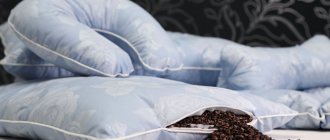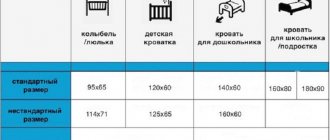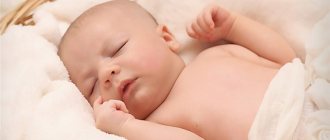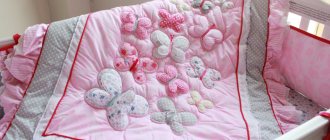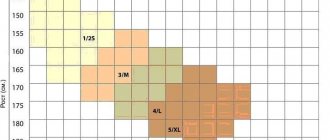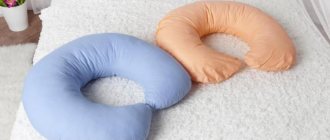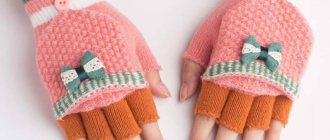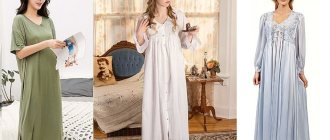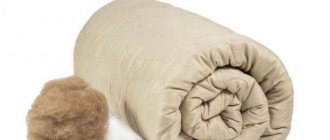Features of the development of the children's spine
- A child is born with an almost straight spine, consisting mainly of cartilage tissue. Therefore, the spine of a newborn is very soft.
- A newborn does not have the physiological curves of the spine, like adults and older children. They are formed during the growth and development of the child.
- The first thing to appear, around the age of three months, is a forward cervical curve (lordosis). This happens when the baby, lying on his stomach, tries to raise his head and learns to hold it on his own.
- A thoracic backward curve of the spine (kyphosis) develops by six months, when the baby tries to sit up.
- The last forward lumbar curve (lordosis) appears closer to one year, when the child stands on his feet and tries to walk independently.
In infancy, the most important thing is not to create additional stress on the spine in order to ensure its proper development. Therefore, it is necessary to listen to the recommendations given by the pediatrician and orthopedist. It is necessary to start sitting up and putting the child on his feet in a timely manner, as well as choosing the right crib, mattress and pillow.
Should I buy a pillow or not?
When choosing a crib for a newborn, a question arises that worries future parents: “Do I need a pillow?” On this issue, the opinions of pediatricians and orthopedists agree, and they argue that a healthy newborn does not need a pillow. He sleeps quite comfortably on a flat mattress.
If you are embarrassed that your baby sleeps without a pillow, you think that he is uncomfortable, you can place a folded thin but soft diaper under the baby’s head. Moms, remember when they give you a baby in the maternity hospital, they bring him in a crib without a pillow. And it's not because there aren't enough pillows. Using a pillow is undesirable for a baby, and there are reasons for this.
Reasons why babies should not be placed on a pillow:
- the correct development of the spine is disrupted;
- This is dangerous; in a dream, the baby can bury itself in the pillow and suffocate.
Remember, children from birth to one year cannot use a pillow in a crib or stroller.
However, in some cases a pillow is still needed. There are diseases for which it is necessary to use a pillow. In such situations, doctors recommend an orthopedic pillow.
Such diseases include:
- birth injury of the cervical spine;
- torticollis;
- weakened or increased tone of the neck muscles;
- deformation (curvature) of the skull bones.
In mild cases of the disease, an orthopedic pillow helps cope with the disease.
In more severe cases, complex treatment is required. An orthopedic pillow fixes the head in the correct position, ensuring the correct development and formation of the musculoskeletal system in children.
Today, pharmaceutical companies offer a large selection of such pillows. Let's consider several options.
When should it be used?
After the birth of our daughter, pediatricians told us that there was no need to put the baby on a pillow. The little one is fine as it is if there are no deviations that need to be corrected. I took a regular thick diaper, rolled it up and put it under my head. As my daughter grew older, the number of diapers increased to 3. I placed them so that one was higher than the other, and the result was a small slope. This is how I prepared the little one to get acquainted with an ordinary pillow.
But there are a number of indications for which the product is simply vital! Only a doctor can determine the reasons. And some of them even the parent will be able to notice.
- Frequent regurgitation. Notice how much your baby spits up per day? They explained to us at the maternity hospital that a toddler can do this no more than 5 times a day. And a very small amount. That is, there should be no fountains. This is already called vomiting!
- Torticollis. When the baby constantly turns its head in one direction. No matter how you lay it down, in a couple of minutes it will return to its original position. Have you observed this with your baby? If the answer is yes, tell your pediatrician about your observations.
- Increased or decreased tone of the neck muscles. Only a doctor can make such a diagnosis. And one pillow can’t help here. Complex therapy with massages, phoresis, etc. is often needed.
- The shape of the skull is irregular. When a baby is born, the bones of his skull are still soft. And it is easy to disrupt development with incorrect head position. The reason for this may be the same torticollis. The child constantly holds his head in one direction.
So, if you notice something like this in your baby, do not put off visiting your pediatrician. Depending on the problem, a period will be assigned from which the product can be used.
Models of orthopedic pillows
- Butterfly pillow. In appearance it really resembles a butterfly, in the center of which there is a recess for the head. It fixes the head, accurately repeating the curves of the neck and the configuration of the back of the baby's head, promoting proper development.
- Oblique . Resembles a simple pillow for adults. It is rectangular in shape with slightly raised edges and a special recess in the center so that the baby does not roll down. When choosing this model, consider the width of the crib.
- Positional . It is intended for premature babies. With its help, you can fix your baby in the correct position. This allows you to relieve excess stress on the spine, which is not yet strong enough.
- A pillow that is used for walking in a stroller. It secures the head and upper body, softening shocks when the stroller moves.
The filling is important when choosing a pillow.
You should not buy a pillow filled with feathers, down and wool. They are a common cause of allergies in children. It is best to choose a pillow with synthetic filling. It's safe and accessible. High-quality, but expensive fillers are comforter in the form of small balls and latex. Good recommendations are given to natural filler based on buckwheat. It is also very important that the material that covers the pillow is soft, natural and pleasant to the touch.
If there are indications...
If there is a problem that is associated with a disease of the spine, a deformation of the skull, or perhaps even a diagnosis of torticollis by doctors, then it is advisable to use an orthopedic pillow made in the form of a cushion with a depression or notch in the middle. This ensures the correct position of the child's head.
And you should always remember that an incorrectly selected pillow will cause too much inconvenience, but also cause great harm. Since children's bones, joints and muscles are easily deformed. This means that until the age of 2 years, until the spine is sufficiently strong, any pillow in a child’s crib is undesirable. But if there are indications for its use, then you need to choose the product very scrupulously and carefully.
At what age can a child sleep on a regular pillow?
A child can use a regular pillow from the age of two, when his spine is already strong enough.
He can sleep on the pillow all night without rolling off. In addition, regularly sleeping on a flat surface without a pillow at this age is dangerous for your baby’s health. Blood flow in the cervical spine may be impaired and the brain will suffer from a lack of blood supply, resulting in frequent headaches and other health problems.
If there is no evidence
Therefore, for the correct formation of the spine, experts advise putting it to sleep on an absolutely hard mattress, trying not to use a pillow.
Moreover, due to its anatomical characteristics, a newly born child prefers to sleep on a straight surface, it is much more comfortable for him. Therefore, there is no need to put anything under your head.
Sometimes the pillow is even extremely dangerous. Although some bedding sets for newborns sometimes have it, as a result, many consider its use a mandatory attribute.
Tips for choosing the right pillow
- Choose a pillow that is the right size for your crib.
- Do not buy a pillow that is too soft; the baby’s head should not sink into it.
- The ideal option is a low, moderate density, straight pillow.
- Give preference to pillows made from natural materials.
When sleeping, only the child's head should be on the pillow. His arms and shoulders should not rest on her.
No less important for the proper development of the spine is the position of the body in sleep. Now you know that there should not be a pillow in a child’s bed until the age of two. How to put your baby to bed so that he sleeps peacefully at night without harm to his health?
Sleep and its standards
Sleep is a very important physiological process. After all, it is in their sleep that children grow. This can be explained by the fact that during sleep the body produces growth hormone - somatotropin. Its production peaks from about midnight to 3-4 am. Therefore, it is important for proper development and growth to adhere to a daily routine, which will benefit not only the child, but also rest for the parents. However, the older he gets, the less time he needs to sleep. A child aged 2 to 4 years needs 16 hours of sleep, a child aged 5 years needs 13 hours, a child aged 6-7 years needs about 12 hours, and teenagers need 9 hours of sleep.
There are a huge number of ways to quickly put your child to sleep. An important role in choosing a method suitable for your baby is played by his age.
There are a huge number of ways to quickly put your child to sleep.
First, let's look at several effective ways to put a baby to sleep.
Correct position of the baby in your arms
Did you know that a child must be carried correctly in his arms from birth? It seems that it's as easy as shelling pears. It turns out not. The development of the infant's musculoskeletal system depends on the correct position of the baby in the arms.
- Classic . The child's head is placed on the elbow bend, while your forearm supports his back, and your palm supports his buttocks. You can support your baby's legs with your free hand.
- Column position . Hold your baby upright so that he lies on your chest and rests his cheek on your shoulder. At the same time, hold him by the back of his head and back with one hand, and by his buttocks with the other.
Carry your baby in different positions, sometimes on one hand, sometimes on the other.
A device very similar to a mother’s arms is a sling. You can carry a child in it from birth. From 6 months you can carry your baby vertically and use a kangaroo carrier for this. By following these simple recommendations, you will ensure your baby's proper development of the spine.
What kind of pillow should it be?
At what age is it permissible for a child to put something under his head? It is better to consult a pediatrician. You can purchase, for example, an inclined pillow for newborns. For each baby it is necessary to adhere to an individual approach.
When walking, you need to soften the shocks of the stroller due to unevenness on the road. It is better to place something soft under the child's upper body. Or cover the entire inner surface of the stroller. The best option is a warm blanket under a sheet.
If there are developmental abnormalities in the newborn, you can use an orthopedic positioner pillow. It was developed by specialists for premature and weakened babies, with a maximum risk of abnormalities in the musculoskeletal system. The product is also recommended if the baby has muscular dystonia, when his body takes forced positions due to hypertonicity.
The positioner pillow for newborns optimally helps maintain the anatomically correct position of the baby's body, optimally removing excessive load from the still fragile spine.
A cocoon pillow is an excellent prevention of various pathologies in a child’s spinal column.
Choosing a crib and mattress
Be responsible when choosing a crib. When choosing, give preference to those made from natural raw materials.
Expert advice for making the right choice:
- A wooden crib with several height levels and an adjustable side is best.
- The crib must be stable and must not wobble or warp.
- Its bottom should be flat and not bend under the child’s body weight.
- The distance between the crossbars on the sides should be such that the child’s head, arm or leg do not get stuck and the baby cannot accidentally fall out of the crib.
It is equally important to choose the right mattress. It should be made from materials that are approved for use in infants, with environmentally friendly filling. For example, coconut. Choose a medium-hard mattress that matches the child’s body weight and age. The mattress is placed in the crib so that there are no gaps between the walls and the mattress itself.
